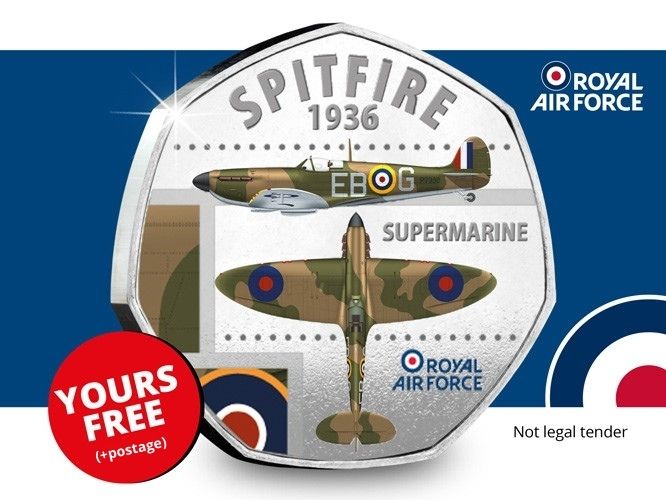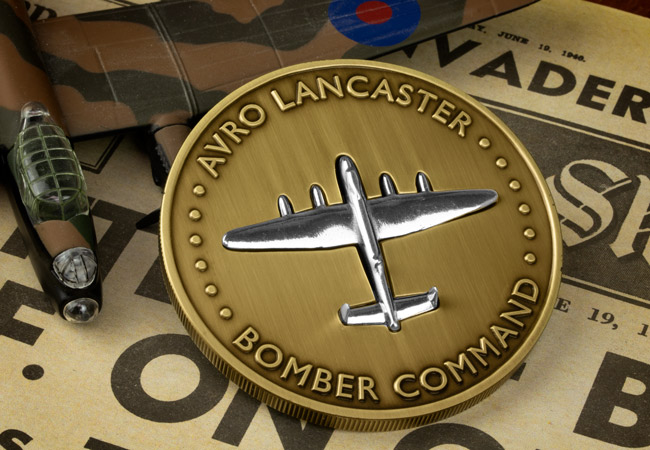Posts Tagged ‘Aircraft’
The day I carried coins on board an Original WWII Lancaster
On 14th June, Ben, our Concept Development Manager, had the opportunity to see the famous RAF Avro Lancaster up close and personal.
Here’s what Ben has to say about his experience retracing the steps of the legendary Dambusters and having the brand new £5 coins carried on board an original WWII Lancaster Bomber…
To mark the 80th anniversary of Operation Chastise – the legendary Dambusters Raid, I wanted to capture some of that history and somehow apply it to some of the superb coins issued for the anniversary.
Following is my story of how our one day in Lincolnshire panned out. A story that makes each of these coins – in my opinion – uniquely collectable. Here’s how it went…
I have come to rural Lincolnshire to a private museum and airstrip at the Lincolnshire Aviation Heritage Centre in East Kirkby, to take some of the Dambusters 80th Anniversary Coins on a ride of a lifetime.
But before that happened, it was an overnighter in a remarkable hotel, few know about. This part of the English countryside is awash with airfields, aircraft museums and RAF bases.
It was central to RAF and Bomber Command’s missions and in 1944 the skies would have been buzzing with Spitfires, Hurricanes and of course, Lancaster Bombers. And that’s why the hotel I stayed in has some fascinating Dambusters links.
The Petwood Hotel was where Wing Commander Guy Gibson and the hand picked 617 Squadron had billeted during the war.
The squadron bar is now a museum shrine to the history of the squadron featuring artwork, photos and cabinets full of authentic 617 memorabilia. This is the exact room where Guy Gibson would have had a pint with his colleagues, as they discussed their missions past and present.
There is even a genuine prototype Bouncing Bomb in the garden…
It’s a remarkable feeling to know you’re sat at the very bar they did.
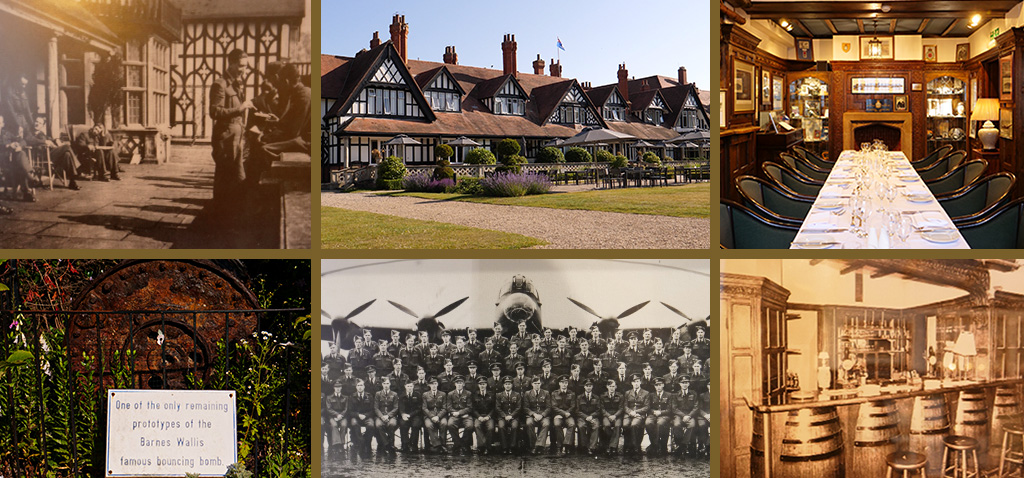
After an evening at the bar, it was up bright and early to head to the Lancaster Aviation Heritage Centre. And it was here as I drove through the gates, I got my first glimpse of ‘Just Jane’, one of only FOUR operational Lancaster bombers in the entire world.
Technically known as Avro Lancaster B. VII NX611, she was one of 150 Lancasters built in early 1945 for operations in the Far East.
She’s had a varied history. In the 1970s she stood as the Gate Guardian at RAF Scampton (home of Vulcan bombers and more recently, The Red Arrows) before being sold privately and moved to her current home in 1987. She is now a fantastic piece of aviation history, and the ongoing restoration program means hopefully soon we will see her take to the skies once more.
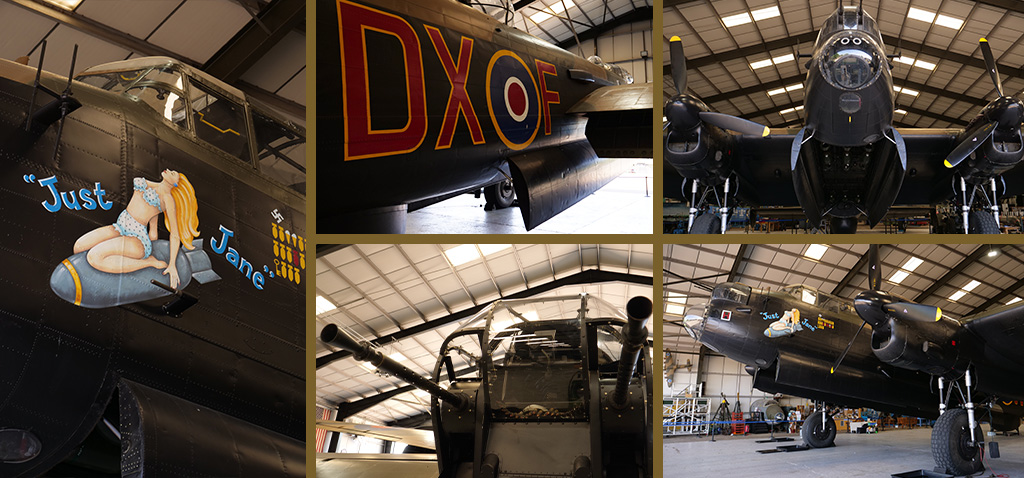
It was a beautiful sunny day, as I arrived at the airfield early in the morning to get the coins onboard. She was still in her hangar alongside the De Havilland Mosquito and a B25 Mitchell.
Before the Lanc was fired up – the main part of our mission started. We were given permission to board and get the coins securely stashed. This in itself was a privilege, reserved usually for visitors who book the tour and the ride, something that gets booked up a year in advance.
Despite its size, there is not a lot of room inside a Lancaster for boxes of coins!
There’s barely room for people, and only once you are inside do you contemplate how it must have felt when heading on a bombing mission. It’s dark, cramped, and once you are in position, there’s no moving. With the engines running I imagine it is exceptionally loud.
The coins were loaded in with help from the crew who work at the LAHC, and I had a short amount of time to photograph them inside the plane before she was moved outside and prepared for the day’s events.
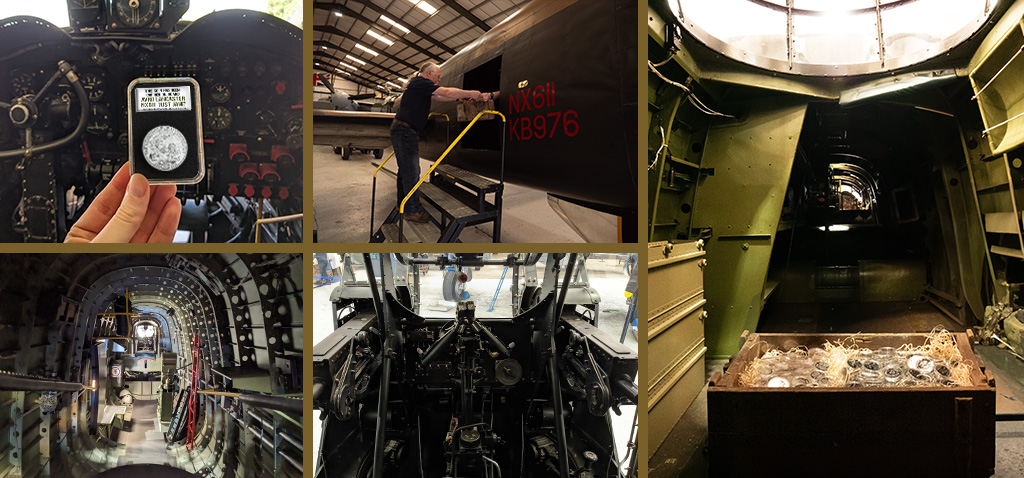
Then the magic happened.
As the four huge Merlin engines spluttered into life, a deafening roar bellowed across the tarmac, debris flew across the airfield as the wind seemed to pick up as we stood in awe. Lancaster Bomber NX611 made her way along the tarmac and onto the grass airstrip, where the engines kicked up a few notches.
It really is a sight to behold. And there we had it, coins travelling on board a piece of aviation history in the anniversary year of the Lancaster’s most famous moment – adding to their own provenance forever.

As the Lanc returned, the coins having been onboard a few hours, I had a five-minute window between runs to get onboard, remove the coins and stack them up on the airfield.
She had another group of guests to take for a ride. She wasn’t going to wait for us, and I wasn’t going to get in her way. It was a day I shall never forget. And thankfully, these coins now act as a lasting reminder of this epic and historic occasion.
If you’re interested…
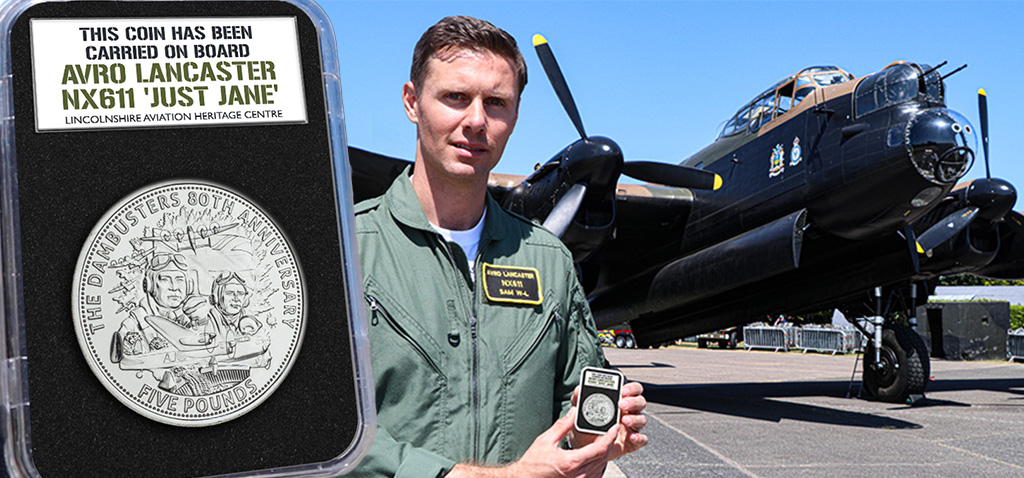
Click here to secure your Lancaster NX611 CARRIED Dambusters £5 for JUST £25 (+p&p) >>
4 monumental aircraft to the Royal Air Force’s history
The birth of the Royal Air Force (RAF) in 1918 was the first time there had been a separate and independent air force established in any country.
It soon became among the most dominant air forces globally.
The 1930’s saw public interest in aircraft increase dramatically and following World War Two (WWII), the demand for the number of aircraft to be built grew quickly in a very short space of time.
Throughout its life, the RAF has monitored the advances in aircraft for military use, and today displays some of the greatest developments in aircraft technology.
For nearly a decade we’ve worked in partnership with the RAF. In that time, we’ve preserved and celebrated over 100 years of history on official commemorative releases.
Let me tell you about 4 aircraft monumental during their existence.
The Sopwith F1 Camel
This Biplane fighter had only one seat and was given the nickname Camel after one squadron commented on its hump like appearance. A comment that would influence its official name.
Carelessness would get you killed in this aircraft.
Pilots had to be skilled to fly it, attentive and observant.
The Camel thrived in daylight but also succeeded at night.
The aircrafts actual nickname?
The King of the Air Fighters.
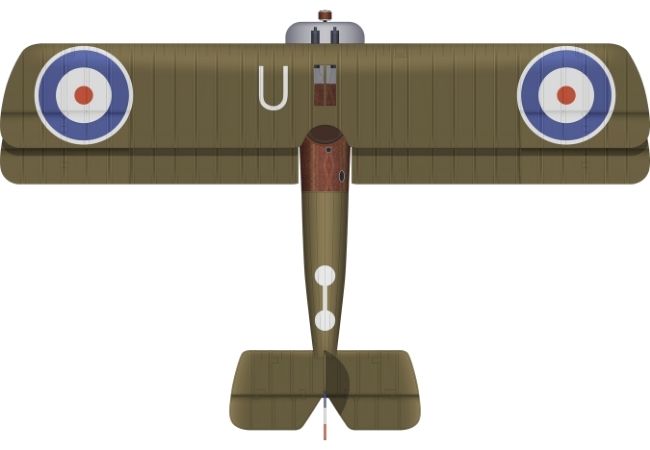
The Avro Lancaster
The Lancaster proved vital towards the end of WWII for Bomber Command. The aircraft helped Britain successfully undermine Nazi Germany from the air.
Lancaster crews risked their lives every time they took to the air in these bombers.
They showed tremendous bravery.
On average they carried out 21 missions before they were lost.
The Eurofighter Typhoon
A vision of the future.
This is how the RAF describe this 21st century Eurofighter Typhoon.
Did you know this aircraft can travel two times faster than the speed of sound? It uses cutting edge technology and has many advanced features.
The UK, Germany, and Italy all worked collaboratively on this aircraft, as they have done also with the tornado project for over several decades.
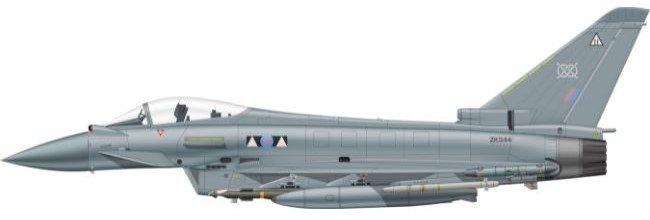
The Spitfire
The Spitfire is by far the most famous British fighter aircraft in history. It was designed by Reginald J Mitchell for the Second World War and there are many reasons why pilots fell in love with it.
It was a symbol of freedom.
The early Mark II could reach speeds of up to 360 mph.
The Spitfires sleek lines and elliptical shaped wings make it perhaps the most graceful fighter ever created.
Did you know that Mitchell’s first attempt to answer the British Air Ministry’s call for an all-metal land-based fighter aircraft was rejected?
It had a cooling system issue.
So, his team tried again.
And boy, did they triumph.
The new design had retractable landing gear, an enclosed cockpit and of course, the thin wing shape.
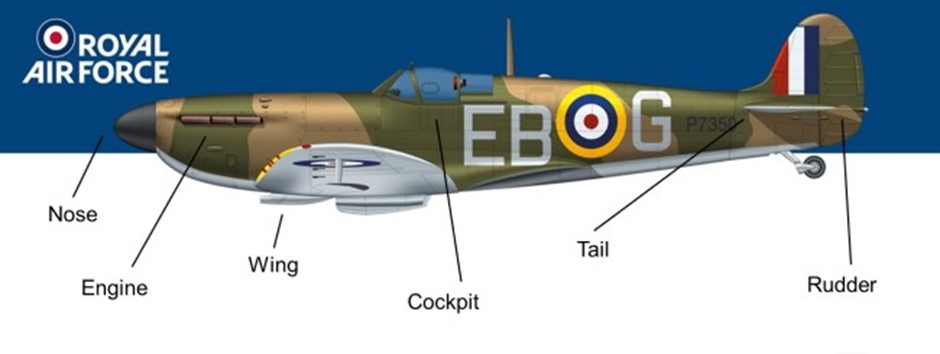
After the first flight of the prototype in 1936 only a few changes were made and by early June, the Air Ministry had ordered 310 Spitfires. By the outbreak of the Second World War, 306 Spitfires were in service with the RAF, along with 71 waiting and 2,000 in the pipeline.
If you’re interested…
The aircraft I have spoken about are intricately illustrated on our collection of commemoratives celebrating the History of the RAF.
The first one in the collection I hear you ask.
Well of course it must be the Spitfire.
Bill Dady, the renowned aviation artist, has designed this one.
Click here to start the History of the RAF Collection by securing your Spitfire Commemorative
for FREE >>
The Avro Lancaster – a historic, aeronautical icon…
The Avro Lancaster is one of the most well-known heavy bombers that participated in the Second World War, and is iconic when thinking about the contribution it had towards the Allies achieving victory over tyranny and persecution.
Out of the thousands that were built during wartime, only two Avro Lancaster’s exist today that are still airworthy – one of which is the Avro Lancaster PA474.
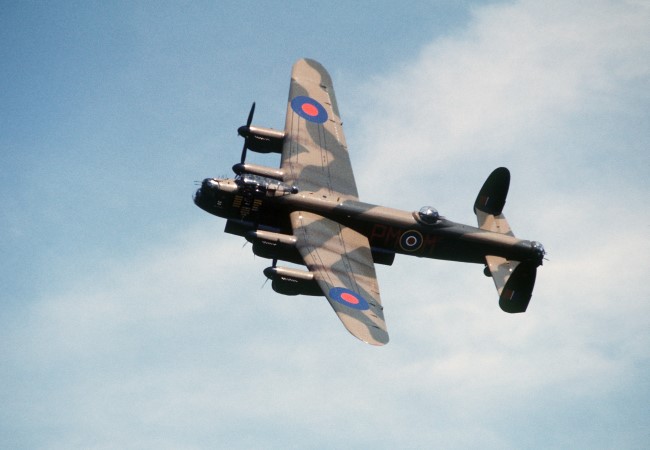
The Avro Lancaster PA474 was built in 1945 at the Vickers Armstrong Factory at Harwarden Airfield in Chester, and was originally used for strategic bombings in the Far East. After the war ended when Japan surrendered, the Lancaster PA474 was assigned to Photographic Reconnaissance duties in Africa, before being used as a pilotless drone, and even appeared in two iconic films – The Guns of Navarone and Operation Crossbow.
In 1973, this Lancaster was restored back to wartime standard and joined the Battle of Britain Memorial Flight at RAF Coningsby (BBMF). The BBMF’s main purpose is to maintain the priceless artefacts of our national heritage in airworthy condition, in order to promote the modern day Air Force and to inspire future generations.
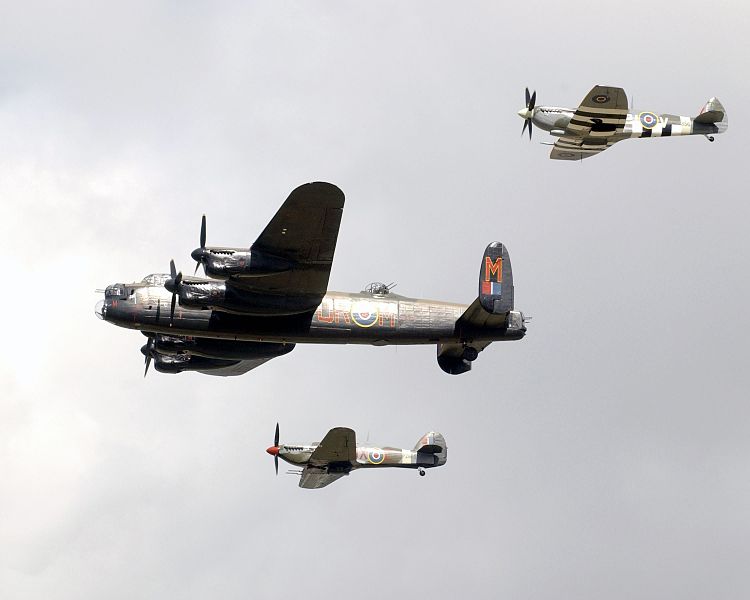
In 2015, the Avro Lancaster PA474 had an in-flight engine fire. The aluminium engine casing from this was then melted down, and sculpted into models of Lancaster planes, which you can now own in this historic commemorative…
The BRAND NEW Avro Lancaster Provenance Medal
Today, a small number of collectors have the chance to own a BRAND NEW Commemorative featuring an ACTUAL piece of the Avro Lancaster PA474 that flew during the war.
This incredible commemorative features an original piece of Avro Lancaster, hand-sculpted into the shape of a Lancaster and precision set into the deluxe SUPERSIZE 70mm Medal.
Just 250 lucky collectors will have the chance to own this special commemorative. The last Provenance medal featuring a piece of Hurricane SOLD OUT in a matter of weeks.
Click here to secure your Lancaster Commemorative while you still can!

